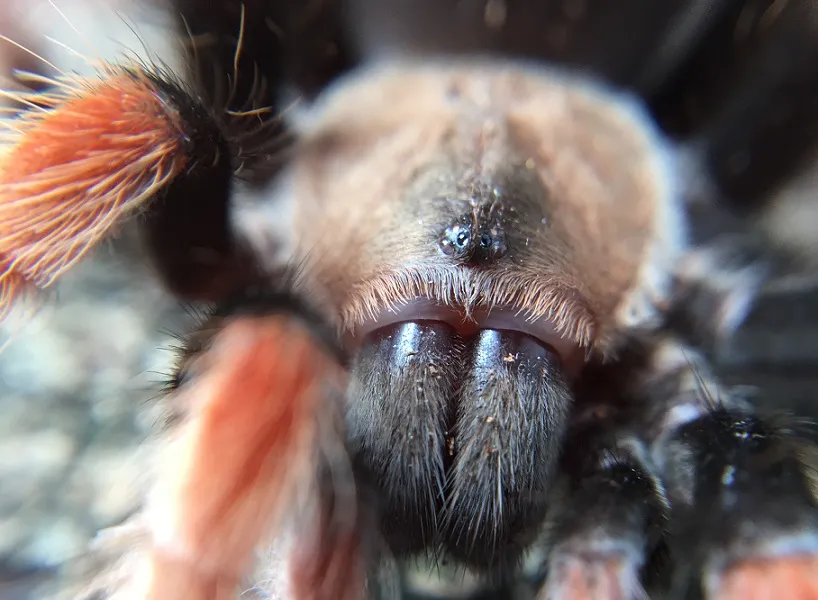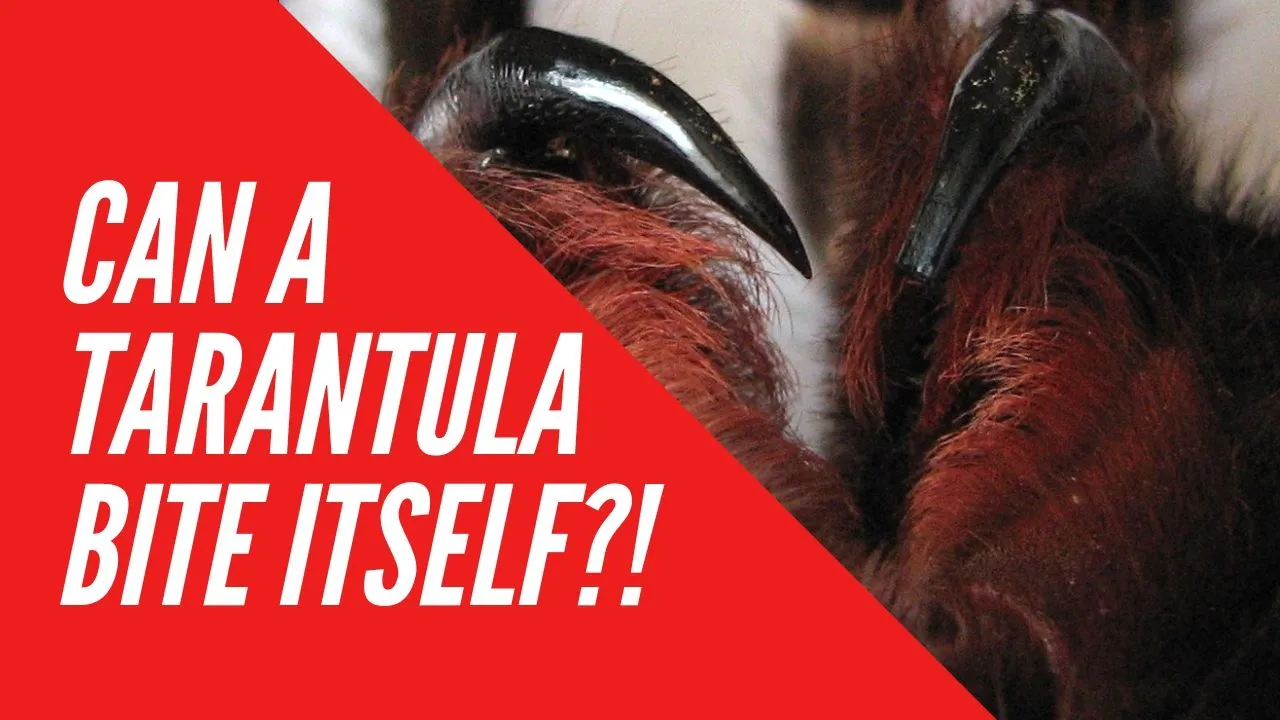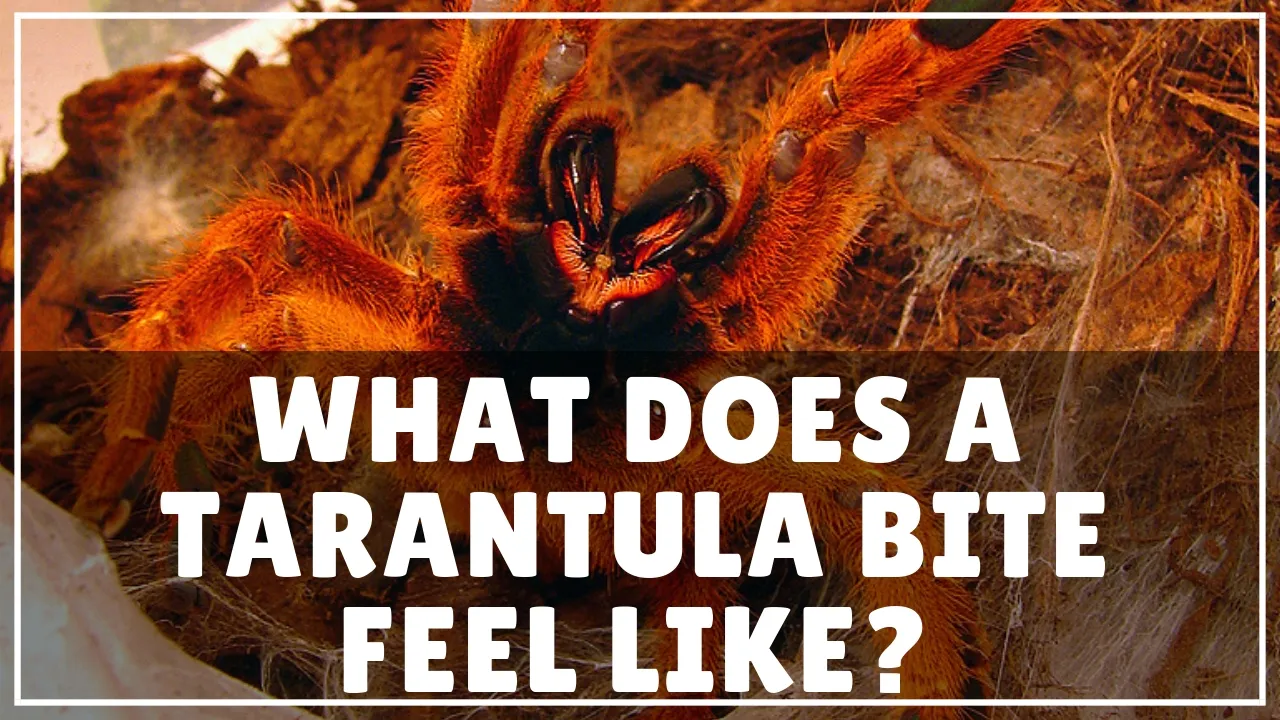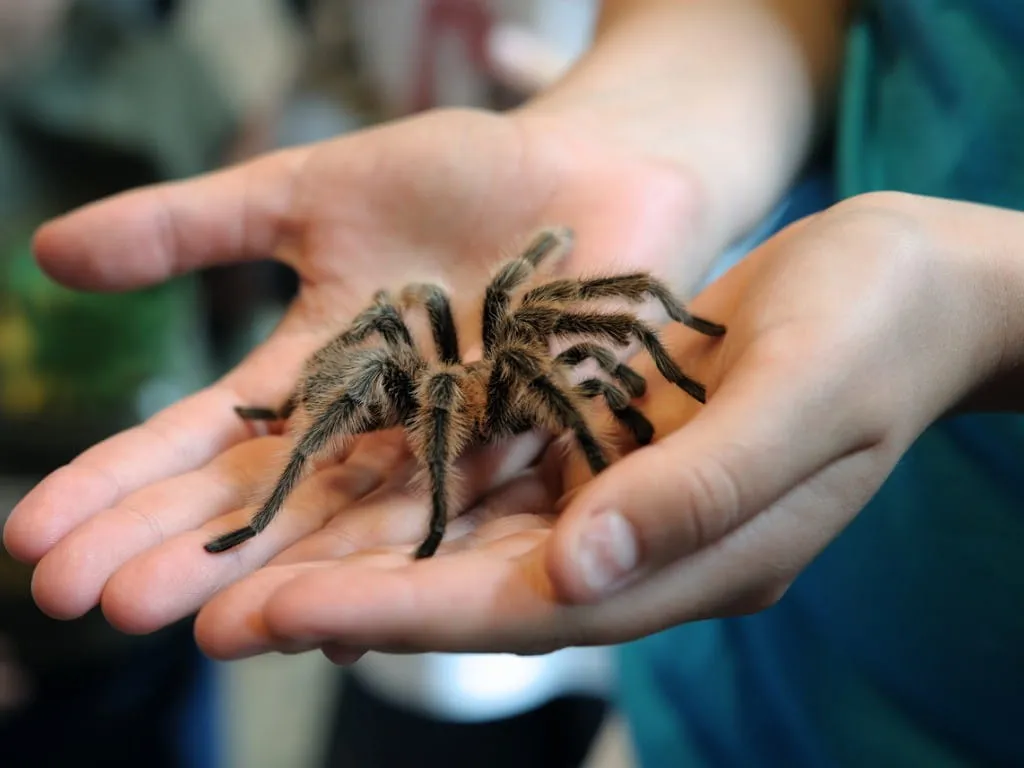Encountering a tarantula can be an exciting experience, but a common concern that arises is the potential for a painful bite. Understanding how much a tarantula bite hurts is essential for anyone who may come into contact with these fascinating creatures, whether as a pet owner or in their natural habitat. The intensity of pain from a tarantula bite is influenced by a variety of factors, including the species of the tarantula, the amount of venom injected (if any), and individual sensitivity. This guide will delve into the causes of pain, the factors that influence it, and the necessary steps for treatment and prevention.
What Causes Pain in Tarantula Bites?
The pain associated with a tarantula bite is multifaceted, originating from a combination of physical trauma and, in some cases, the introduction of venom. The tarantula’s fangs, which are sharp and designed for piercing, cause the initial injury. When the fangs penetrate the skin, they create a physical wound that, by itself, can result in localized pain and discomfort. The presence of venom, which varies significantly among tarantula species, can exacerbate the pain. While most tarantula species do not have highly potent venom, its introduction can still cause pain, swelling, and other inflammatory responses. Furthermore, the psychological aspect should not be overlooked. The fear of being bitten by a large spider like a tarantula can amplify the perception of pain and contribute to the overall experience.
Venom’s Role in Tarantula Bite Pain
While not all tarantula bites involve venom injection, the presence of venom significantly affects the level of pain experienced. Tarantula venom typically contains a mix of enzymes and toxins that can cause various effects. These substances may trigger localized inflammation, leading to swelling, redness, and increased sensitivity at the bite site. Some components of the venom can also affect the nervous system, causing localized pain or radiating discomfort. However, the severity of these effects depends greatly on the species of tarantula and the amount of venom injected. Some species have relatively mild venom, while others have more potent compounds that can cause more pronounced symptoms. In many cases, the venom’s impact is similar to a bee sting, with localized pain and inflammation. It is important to note that tarantula venom is rarely fatal to humans, but it can cause considerable discomfort and potentially more severe reactions in sensitive individuals.
The Mechanics of a Tarantula Bite

The mechanics of a tarantula bite involve more than just the puncture of the skin; it is a complex interaction of physical and physiological factors. When a tarantula bites, it uses its fangs to pierce the skin. The fangs are typically sharp and can penetrate deeply, causing physical trauma to the tissue. During the bite, the tarantula may also inject venom through the fangs. The amount of venom injected can vary depending on the species, the tarantula’s age, and its behavior. In some cases, the tarantula may deliver a ‘dry bite’ where no venom is injected. Following the bite, the body initiates an inflammatory response, which can lead to swelling, redness, and pain at the bite site. The physical trauma and the chemical action of the venom work in concert to produce the overall pain sensation. The location of the bite, such as a sensitive area, can also influence how painful it feels.
The Physical Sensation of a Tarantula Bite
The physical sensation of a tarantula bite is often described as similar to a bee sting or a wasp sting, although the specific experience can vary depending on the individual and the species of tarantula. Many people report a sharp, stinging pain at the moment of the bite, immediately followed by a throbbing sensation. The area around the bite typically becomes red and swollen, and there may be localized itching or tenderness. Some individuals may experience muscle cramps or stiffness near the bite site. The pain typically subsides within a few hours to a day or two, but the swelling and other symptoms may persist for a longer duration. In cases where a significant amount of venom is injected, the pain may be more intense, and the symptoms could last longer. It is also important to consider that the emotional response to being bitten by a tarantula can significantly influence the perception of pain, leading to increased anxiety and distress.
Factors Influencing Tarantula Bite Pain
Several factors influence the intensity of pain experienced from a tarantula bite. These factors include the tarantula species, the size of the tarantula, and the individual’s sensitivity to the venom. The location of the bite and any allergic reactions to the venom can also affect the severity of the symptoms. Understanding these factors is essential for assessing the potential impact of a bite and providing appropriate care. It is important to emphasize that most tarantula bites are not life-threatening, but they can cause considerable discomfort and, in rare cases, more serious complications. It is always advisable to seek medical advice if you experience severe symptoms or have concerns about a tarantula bite.
Tarantula Species and Bite Severity

The species of tarantula significantly influences the severity of a bite. Some species have more potent venom than others, leading to more severe reactions. For instance, the venom of some Old World tarantulas is known to be more potent than that of New World tarantulas. This means that bites from certain species may cause more intense pain, swelling, and other symptoms. The bite severity also correlates with the tarantula’s temperament. Aggressive species are more likely to bite when threatened, whereas more docile species might prefer to flee or display defensive behaviors before resorting to biting. Therefore, research on the specific species is crucial if you are keeping or encountering tarantulas. If you are bitten, identifying the species can help medical professionals assess the potential severity and provide appropriate treatment.
Size of the Tarantula
The size of the tarantula can affect the bite’s impact. Larger tarantulas have larger fangs and can potentially deliver a deeper bite, causing more physical trauma. The depth of the puncture wound can influence the pain level and the potential for secondary infections. Also, larger tarantulas might inject a larger amount of venom, which can lead to more severe symptoms. However, size alone does not determine bite severity; other factors like the tarantula’s species and temperament are also important. A large, docile tarantula might bite less forcefully than a smaller, more aggressive one. Therefore, while a larger tarantula bite could inflict more physical damage, it is not the only determinant of the pain experienced.
https://example.com/tarantula-size.webp
Tarantula’s Temperament
A tarantula’s temperament plays a significant role in the likelihood of a bite and the resulting experience. Tarantulas with aggressive temperaments are more likely to bite if they feel threatened or provoked. These tarantulas may display defensive behaviors like rearing up or flicking urticating hairs before biting. In contrast, more docile species are less likely to bite and often prefer to flee or hide if they feel threatened. The temperament of a tarantula depends on its species, environmental factors, and individual personality. Experienced keepers can often predict a tarantula’s behavior based on its species and their observations. This understanding is crucial for handling and interacting with tarantulas safely and minimizing the risk of bites. A tarantula’s temperament thus influences both the likelihood of a bite and the potential for stress and anxiety during an encounter.
https://example.com/tarantula-temperament.webp
Individual Sensitivity and Allergic Reactions

Individual sensitivity and the possibility of allergic reactions are crucial factors that determine the severity of a tarantula bite’s impact. Just as with insect stings, individuals respond differently to venom, and some may be more sensitive than others. Allergic reactions can range from mild localized symptoms to severe systemic reactions, such as anaphylaxis, which can be life-threatening. Symptoms of an allergic reaction include hives, swelling, difficulty breathing, and dizziness. The severity of an allergic response depends on various factors, including the individual’s immune system and the amount of venom injected. If someone has a known allergy or experiences severe symptoms after a tarantula bite, immediate medical attention is necessary. Even if a reaction seems mild initially, it can escalate quickly. Therefore, close monitoring and prompt medical care are essential for those who may be allergic or sensitive to tarantula venom.
How to Treat a Tarantula Bite
The treatment of a tarantula bite focuses on alleviating symptoms and preventing complications. The primary goals are to reduce pain, prevent infection, and monitor for any signs of an allergic reaction. Initial steps involve immediate first aid, followed by ongoing care. The majority of tarantula bites are not life-threatening, and proper care can significantly reduce the discomfort and speed up the recovery process. It is always advisable to consult a medical professional, especially if the symptoms are severe or if there is any concern about an allergic reaction. Knowing how to properly treat a tarantula bite can provide both relief and peace of mind.
First Aid Steps Immediately After a Bite
When bitten by a tarantula, immediate first aid is crucial. The first step is to remain calm and move away from the tarantula to avoid further bites. Gently clean the bite area with mild soap and water to remove any debris or venom. Apply a cold compress or ice pack to the bite site to reduce swelling and alleviate pain. If the bite is on a limb, elevating the limb can also help minimize swelling. It’s important to monitor the bite site for any signs of infection, such as increased redness, warmth, or pus. If a significant amount of venom was injected, you might experience intense pain, seek medical attention immediately. During this time, avoid scratching the bite area, as it can increase the risk of infection. Take note of the time and any symptoms you experience, as this information can be helpful for medical professionals. Taking these initial steps can significantly improve your immediate comfort and aid in the healing process.
https://example.com/tarantula-bite-treatment.webp
Cleaning and Caring for the Wound

Proper wound care is essential to prevent infection and promote healing. After cleaning the bite area, continue to wash it gently with soap and water several times a day. Keep the area clean and dry to prevent bacterial growth. Apply an antibiotic ointment to the bite site, as this can help prevent infection. If there is significant swelling or pain, over-the-counter pain relievers, such as ibuprofen or acetaminophen, can help alleviate symptoms. Monitor the wound for any signs of infection, such as increased redness, swelling, pus, or fever. If any of these signs are present, consult a healthcare professional immediately. Regularly changing the bandage and keeping the area clean will promote faster healing. With proper wound care, most tarantula bites will heal without complications within a few days or weeks.
When to Seek Medical Attention
While most tarantula bites are not life-threatening, knowing when to seek medical attention is crucial. If you experience severe pain, swelling, difficulty breathing, or any other signs of an allergic reaction, seek medical help immediately. Other reasons to consult a doctor include if the bite area shows signs of infection, such as increased redness, pus, or fever. If the symptoms worsen or do not improve after a few days, medical evaluation is warranted. If you are unsure about the severity of your symptoms, it is always best to err on the side of caution and seek medical advice. Providing details about the tarantula species, if known, can also assist healthcare professionals in providing appropriate treatment. Prompt medical attention ensures a faster recovery and minimizes the risk of complications.
Prevention and Safety Measures for Tarantula Owners
Preventing tarantula bites involves a combination of safe handling practices, understanding tarantula behavior, and creating a secure environment. By taking proactive measures, both experienced and novice tarantula owners can significantly reduce the risk of bites. It is essential to remember that tarantulas, while fascinating creatures, should be treated with respect and caution. Always prioritize safety when interacting with tarantulas to protect yourself and minimize any potential harm. Proper safety measures not only protect you but also ensure the well-being of the tarantulas.
Proper Tarantula Handling Techniques

Safe handling techniques are fundamental for tarantula owners. Avoid handling tarantulas unnecessarily, as this is when most bites occur. If handling is required, use a long pair of tongs to gently move the tarantula, minimizing direct contact. When handling is necessary, do so over a soft surface, such as a bed or a carpet, to prevent injury if the tarantula falls. Always approach a tarantula slowly and calmly, as quick movements can startle them. Before handling, observe the tarantula’s behavior; if it appears agitated or defensive, it’s best to postpone handling. Regular handwashing before and after handling is essential. These practices can ensure your safety and minimize stress for the tarantula. Respect the tarantula’s space and temperament at all times. When done correctly, handling can be safe for both the owner and the tarantula.
https://example.com/tarantula-handling.webp
Creating a Safe Environment for Tarantulas
Creating a safe and secure environment is essential for tarantula care. Ensure that the enclosure is escape-proof, with a secure lid and appropriate ventilation. The enclosure should be sized appropriately for the tarantula’s species and size, providing enough space for movement and enrichment. The substrate should be appropriate for the tarantula’s needs, and the enclosure should include hides and other furnishings to provide security and encourage natural behaviors. Regularly clean the enclosure to remove uneaten food and waste, maintaining a healthy environment. When working within the enclosure, take care to avoid startling the tarantula. By providing a well-maintained and safe habitat, you not only reduce the risk of bites but also promote the overall well-being and health of your tarantula.
https://example.com/tarantula-environment.webp
In conclusion, tarantula bites can hurt, but the level of pain varies depending on several factors, including the tarantula’s species, the amount of venom injected, and individual sensitivity. While most bites are not life-threatening, it’s essential to understand the potential risks, take appropriate first aid measures, and know when to seek medical attention. By following safe handling practices and creating a secure environment, you can minimize the risk of bites and ensure a safe and rewarding experience with these fascinating creatures. Remember that respect and caution are key when interacting with tarantulas, allowing you to appreciate their beauty and complexity while staying safe.
